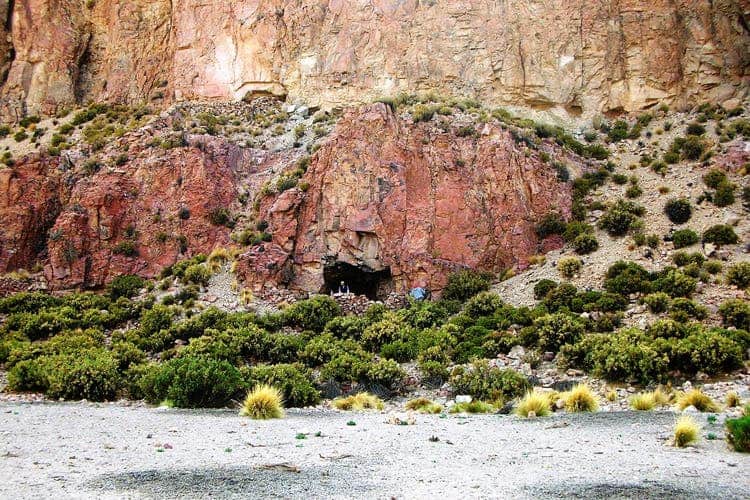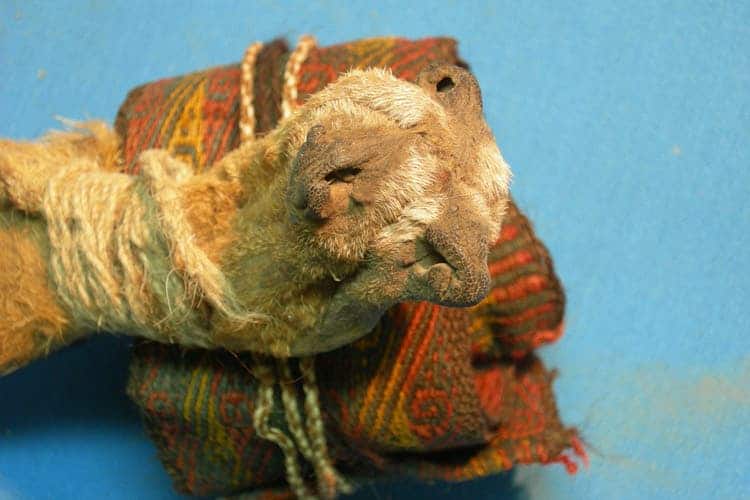Archaeologists working in South America have discovered a shamanic pouch which contained traces of powerful hallucinogenic substances including cocaine, dimethyltryptamine (DMT), and harmine — key active compounds in ayahuasca, a mind-blowing brew commonly associated with the Amazon jungle.
“This is the first evidence of ancient South Americans potentially combining different medicinal plants to produce a powerful substance like ayahuasca,” said Melanie Miller, a researcher with UC Berkeley’s Archaeological Research Facility who uses chemistry and various technologies to study how ancient humans lived.

Ayahuasca may be enjoying a recent surge in popularity in some circles, but the hallucinogenic concoction goes back a long time. In the 16th century, Christian missionaries from Spain first encountered native South Americans in the western Amazonian basin using ayahuasca. Of course, they considered this to be the “the work of the devil”, and given the situation, you can’t really blame them.
Ayahuasca, a strongly hallucinogenic brew, is considered to be a traditional spiritual medicine in ceremonies among the indigenous peoples of the Amazon basin. People who have consumed ayahuasca often report having mystical or religious experiences and spiritual revelations and claim a cathartic, rebirth-like experience.
Recently, archaeologists uncovered one of the oldest pieces of evidence regarding the usage of this brew. The remarkably well-preserved ritual bundle was found by archaeologists at a high elevation of 4,000 meters (13,000 feet) in southwestern Bolivia, where llamas and alpacas roam the land. The leather kit includes a purse made from three fox snouts sewn together and dates back to the pre-Inca Tiwanaku civilization. The Tiwanaku dominated the southern Andean highlands from about 550 to 950 A.D. Miller and colleagues also found intricately carved wooden “snuffing tablets” and a “snuffing tube” with human hair braids attached, llama bone spatulas, a colorful woven textile strip, and dried plant material. No human remains were uncovered at the site, but all these objects were well-preserved, due to the dry conditions of the Andean highlands.

Researchers believe this to be a ritual site, probably used by experienced shamans since the substances involved produced quite serious effects.
“A lot of these plants, if consumed in the wrong dosage, could be very poisonous,” Miller said. “So, whoever owned this bundle would need to have had great knowledge and skills about how to use these plants, and how and where to procure them.”
At the very best, “tryptamine DMT produces strong, vivid hallucinations that can last from minutes to an hour, but combined with harmine, you can have prolonged out-of-body altered states of consciousness with altered perceptions of time and of the self,” Miller said.

Many South American civilizations believed that you can embody the soul of an animal, which is probably why the pouch was made particularly from fox snouts. For Miller, who undertook a two-day journey to reach the excavation area, it was thrilling to study the artifacts.
“We were amazed to see the incredible preservation of these compounds in this ritual bundle,” said Miller. “I feel very lucky to have been a part of this research.”
She and her lab provided the technology needed to conduct toxicology tests on the samples, which included liquid chromatography and mass spectrometry, two technologies used to identify and quantify the components of a mixture. At first, archaeologists were unsure what to make of the stash, but when the lab results came in, everything clicked: everything was used for spiritual purposes — or to consume drugs, depending on how you see things.
The study indicates that ayahuasca and other similar substances have been consumed for over a thousand years in the Amazon basin. Nowadays, ayahuasca is experiencing an unexpected revival in places such as California, where some claim that it has become “as common as a cup of coffee.” Recent studies have also found that ayahuasca may help in treating conditions such as depression.
The study “Chemical evidence for the use of multiple psychotropic plants in a 1,000-year-old ritual bundle from South America” by Miller et al. has been published in PNAS.


